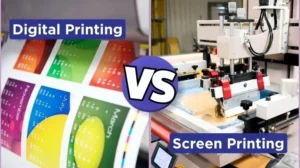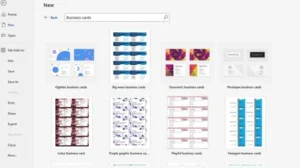Paper business cards are often chosen over plastic due to their lower cost, despite the benefits of plastic cards.
In today’s digital age, where smartphone contact exchanges are prevalent,traditional paper cardscan seem outdated. Yet, business cards remain essential for making a memorable impression and distinguishing your brand.
Despite their higher initial cost, plastic business cards offer a significant advantage. They convey durability and professionalism, ensuring your brand makes a lasting impact on potential clients, far surpassing the impression made by traditional paper cards.
In this blog, we will explore whether plastic business cards are really worth the investment by comparing them with traditional paper business cards.
What are plastic business cards?
Plastic business cards are made from durable plastic materials, which make them waterproof and scratch-resistant. They are essential for networking and exchanging contact information.
Additionally, they come in various shapes, sizes, and colors, allowing for creative expression while maintaining a professional look.

Benefits of plastic business cards
Plastic visiting cards boast numerous advantages:
- Highly durable, almost indestructible material
- Frosted and transparent options for a modern look
- Metallic foil finishes for added flair
- Water-resistant for long-lasting quality
- Semi-transparent to fully clear designs
- Bold styles with the choice of a classic white
Drawbacks of plastic business cards
- Not ideal for traditional industries preferring conventional materials
- Less eco-friendly unless made from recyclable materials
- Generally more costly than paper alternatives.
Where are plastic business cards best used?
Plastic visiting cards are best used for creating durable and unique impressions, ideal for:
- Gift cards
- Discount cards
- Fundraising cards
- Hotel key cards
- ID cards
- Loyalty cards
- Membership cards
- VIP cards and more.
Paper business cards
Paper business cards are traditional cards containingessential contact detailssuch as company name, phone number, email, and logo.
They offer versatility with customizable options like matte or glossy finishes, varied designs, and recyclable materials, making them budget-friendly for large batches. Theback of the business cardallows for creative additions like logos or catchy phrases, enhancing their impact.

Benefits of Paper business cards
- Custom shapes for unique design appeal
- Raised textures and metallic foils for added elegance
- Lamination options like silk, gloss, and velvet finishes
- Protective layers for added durability
- Extra-thick card stock (up to 80-point thickness)
- Edge painting in various colors
- Spot UV coating for selective gloss accents
- Foldover designs for added space and versatility
Related:Business Card Paper Types
Drawbacks of Paper business cards
- Prone to fading and warping over time.
- Limited space for information compared to digital alternatives.
- Require regular updates for changes in contact information or branding.
Where are paper business cards best used?
Best used for cost-effective and eco-friendly options, ideal for:
- Personalized interactions at networking events
- Business meetings
- Conferences
- Trade shows
- Promotional events
- Direct mail campaigns
- Customer loyalty programs and more.
5 reasons to choose plastic business cards over paper business cards
Here are the reasons why plastic business cards stand out over paper alternatives:
- Premium look and feel: Unlike traditional paper cards, plastic business cards convey a premium feel that immediately draws attention. The smooth finish and vibrant colors enhance their visual appeal, making them memorable and distinctive.
- Durability: Plastic cards surpass traditional paper cards in longevity, remaining intact and readable for extended periods. This durability ensures that your contact information remains legible and professional, avoiding the wear and tear associated with paper cards.
- Unique design options: Plastic visiting cards offer flexibility with transparent or translucent sections, creating a modern and attention-grabbing design. This customization capability allows businesses to reflect their brand identity effectively through their cards.
- NFC compatibility: Some plastic cards feature NFC tags, enabling recipients to access your contact details with a simple tap on their NFC-enabled smartphones. This convenience not only enhances user interaction but also showcases your business’s commitment to technological innovation.
- Perceived value: The sturdy feel of plastic visiting cards, similar to credit cards, adds perceived value. Recipients often associate them with higher quality and durability, positively influencing their impression of your brand and services.
Conclusion
If you’re considering the impact of a plastic business card on your company, choosing a reliable professional printing company is crucial. They can provide durable, customizable cards that leave a memorable impression on your clients and contacts.





